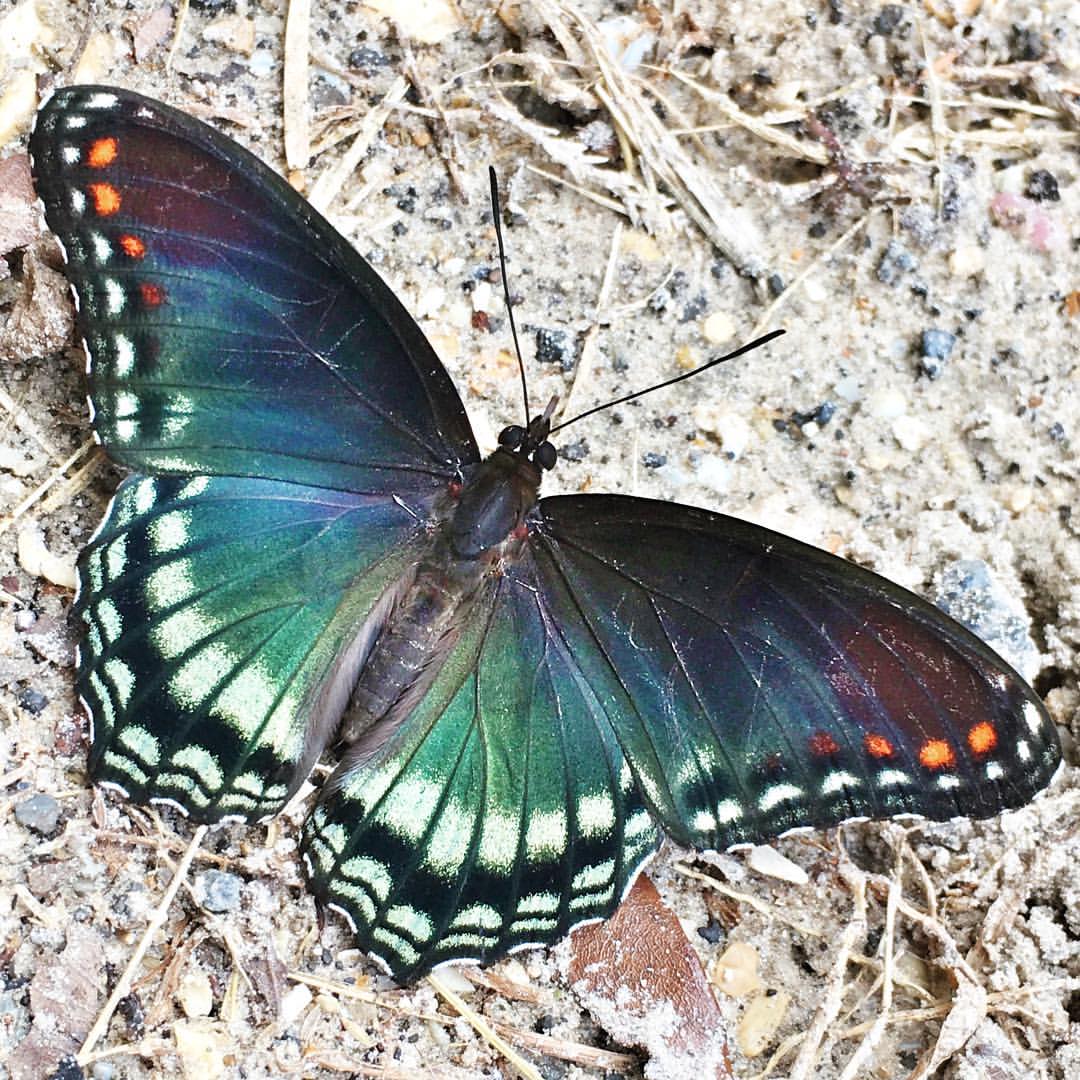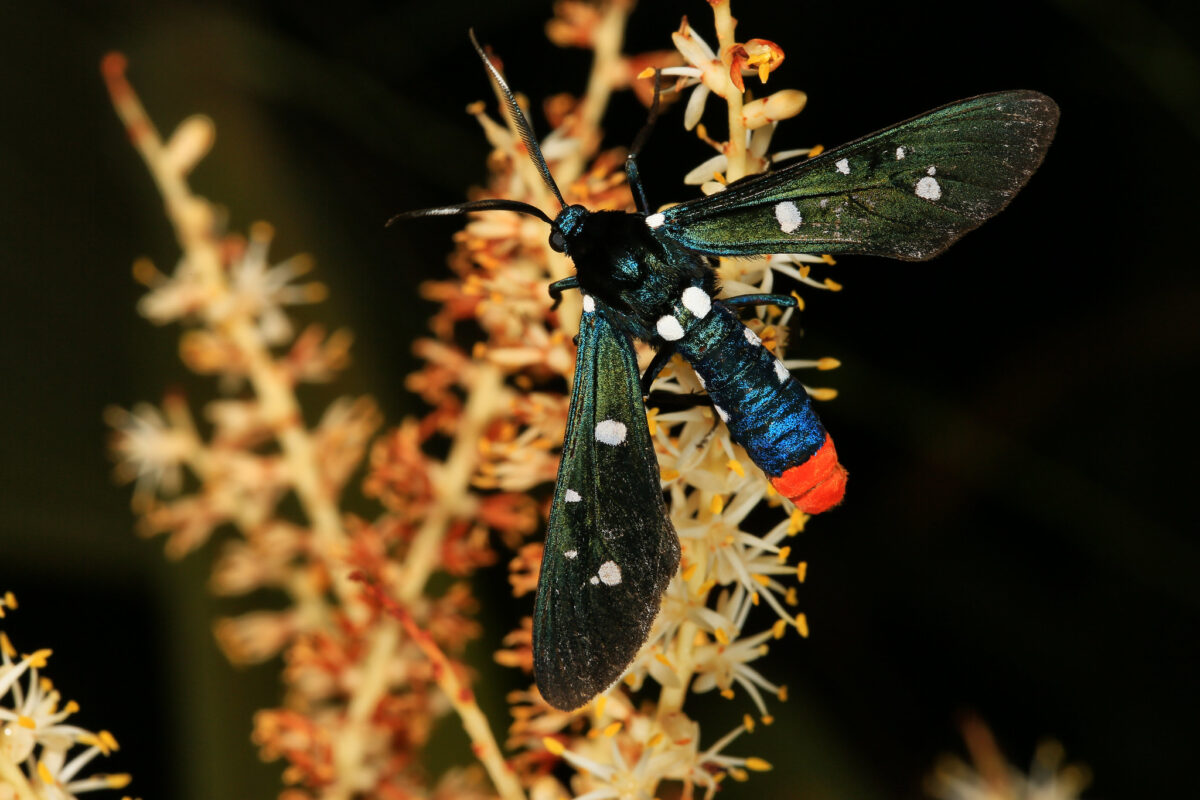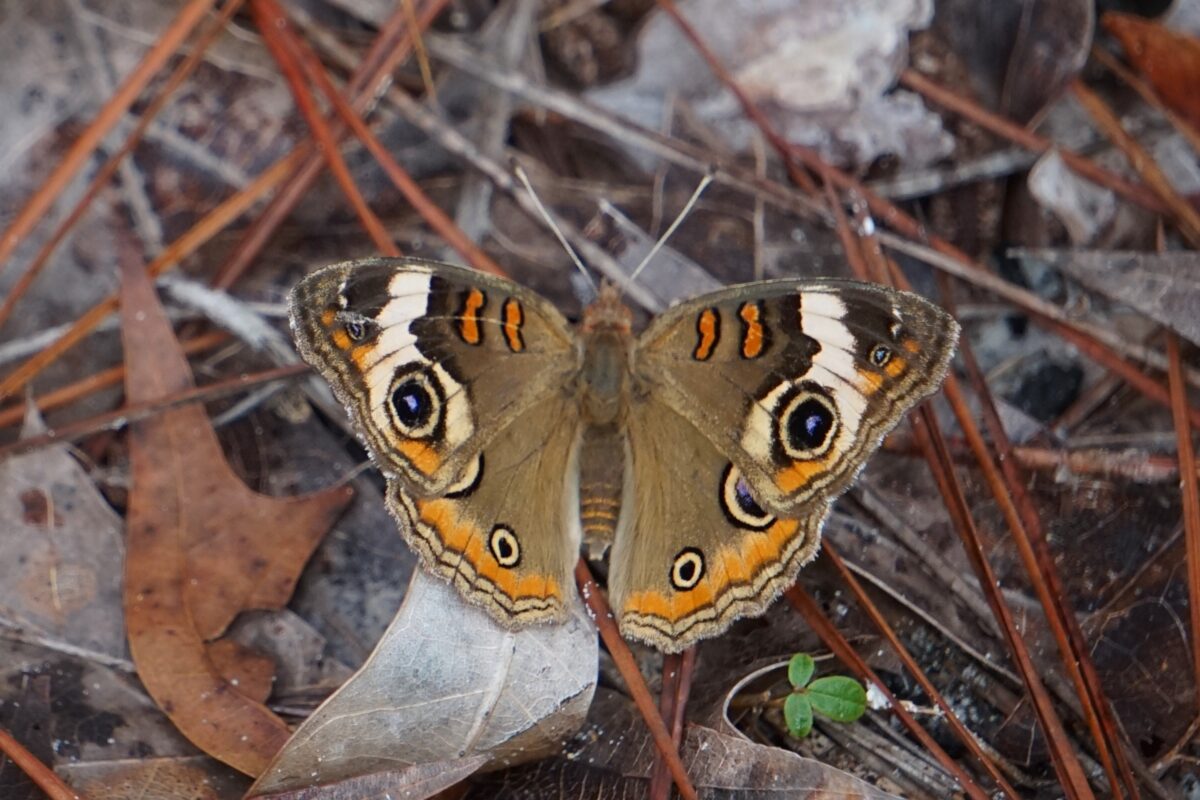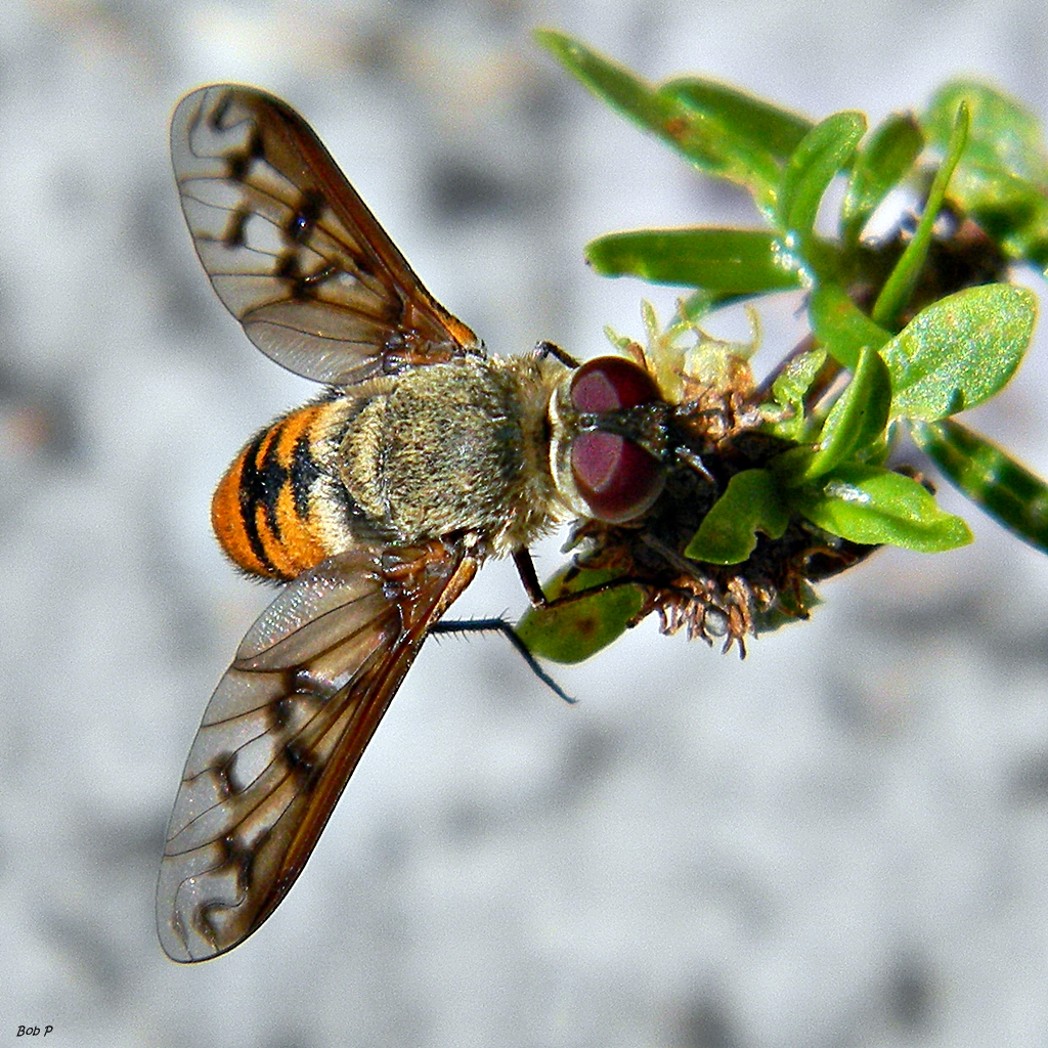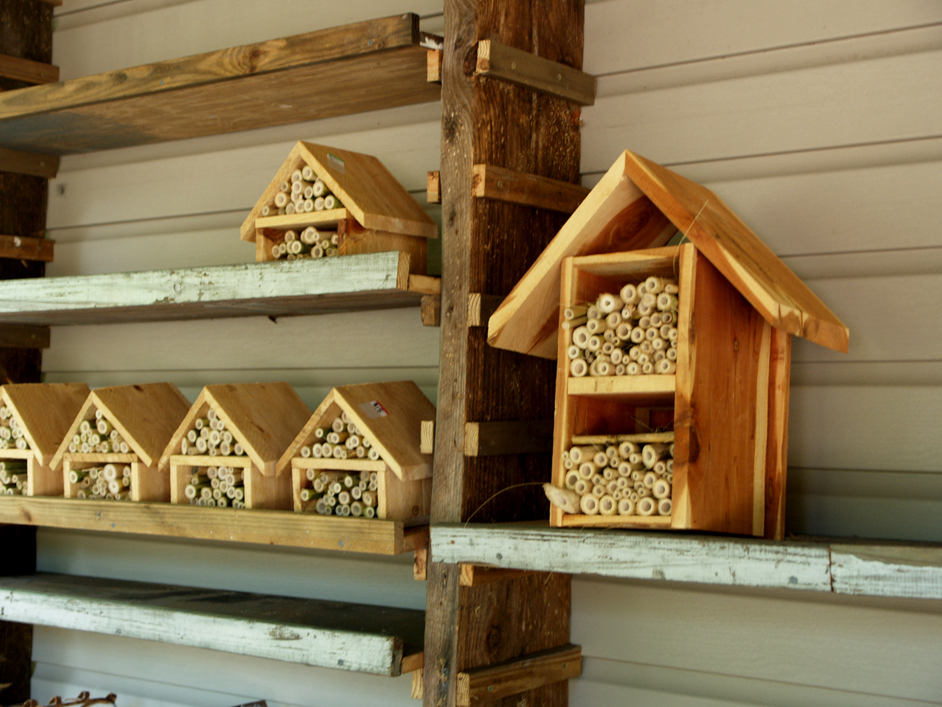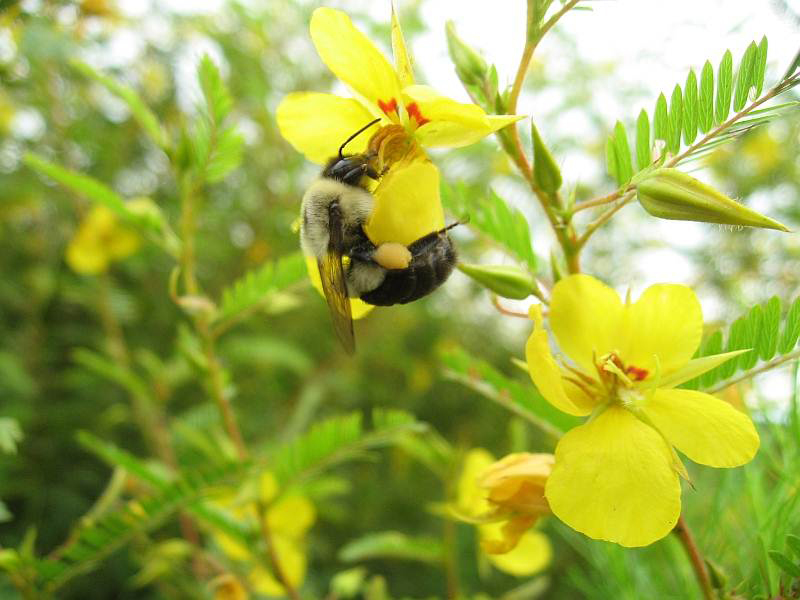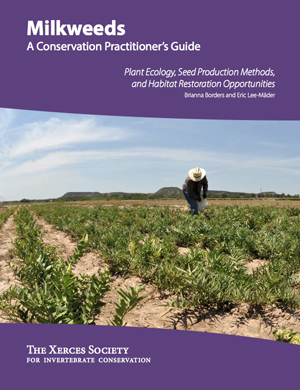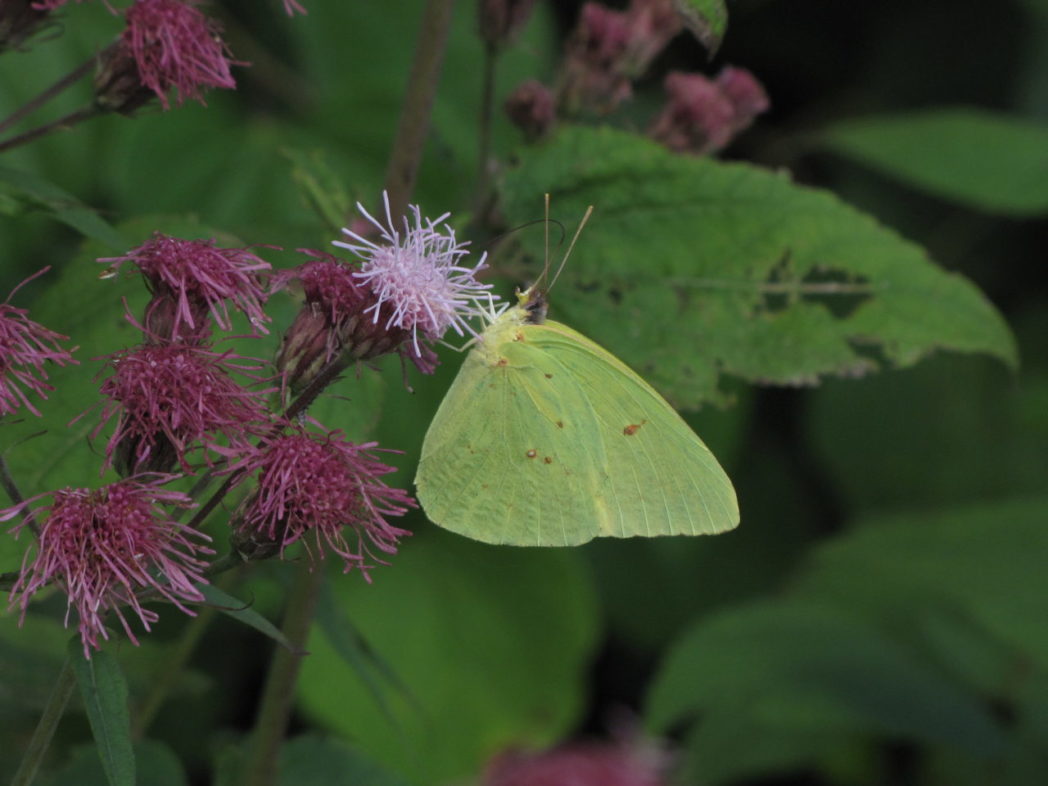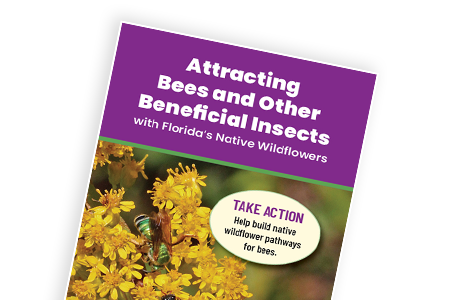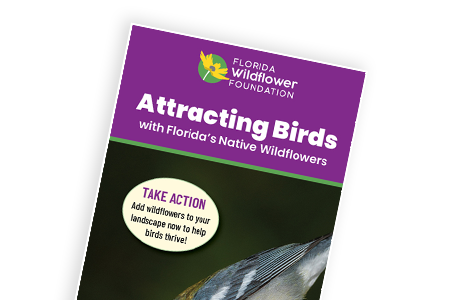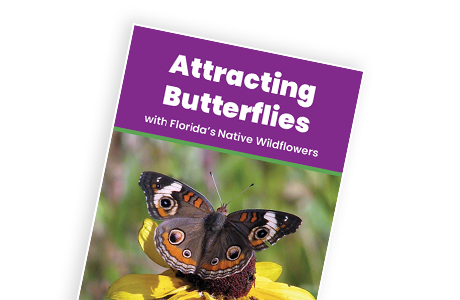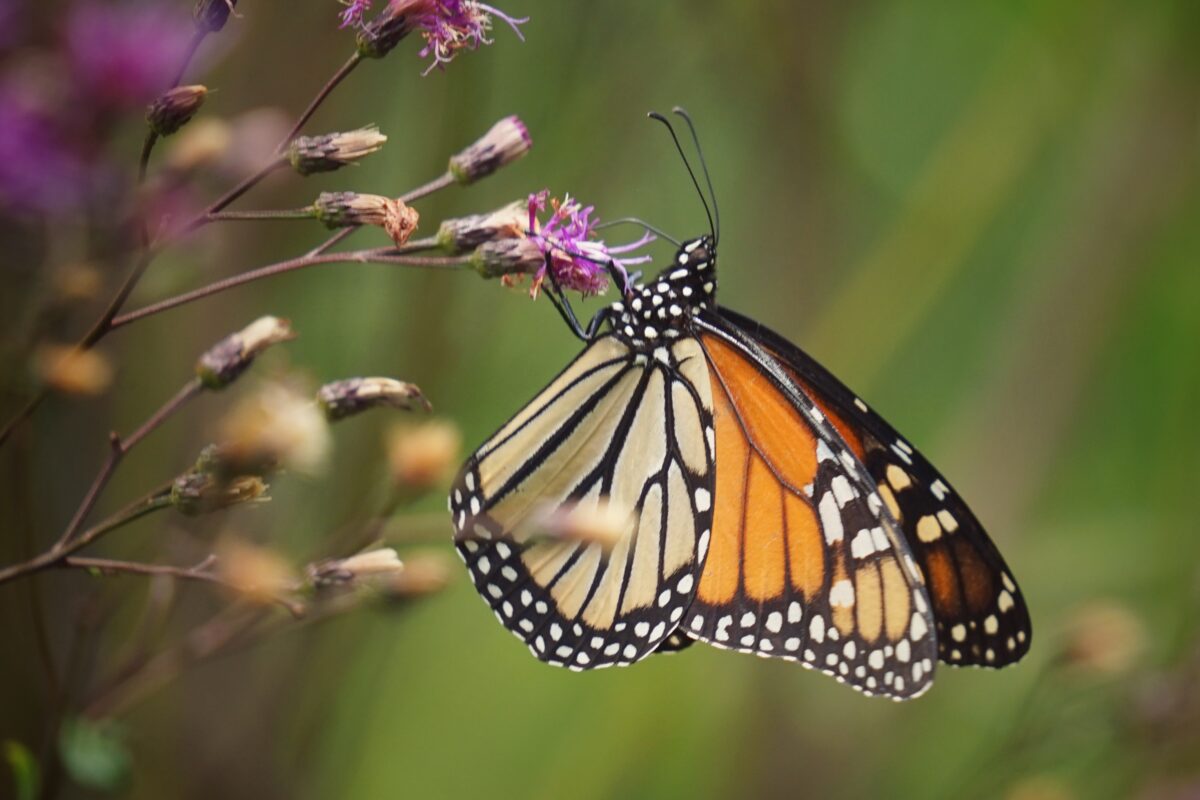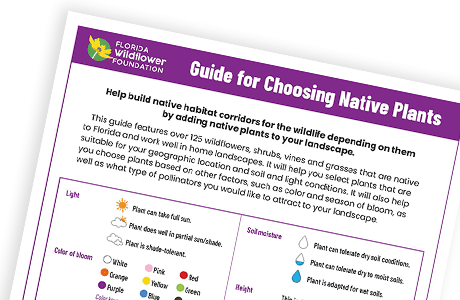Protecting Pollinators
Know your native pollinators
“Know your native pollinators” is a series of articles that will help you identify and appreciate Florida’s varied pollinators, including bees, wasps, butterflies, moths, beetles, flies, birds and bats.
Red-spotted purple
Contrary to its name, the Red-spotted purple is neither red nor purple, but a vibrant shade of blue! This butterfly is common throughout the southeastern United States.
Polka-dot wasp moth
Contrary to its appearance, the harmless Polka-dot wasp moth (Syntomeida epilais) isn’t a wasp — but it’s not your typical moth, either!
Common buckeye
Despite this butterfly’s intimidating eyespots and tendency to chase passing objects, the Common buckeye is anything but aggressive. It is the most widespread of Florida’s buckeye butterflies, found in all 67 counties.
Bee fly
The Bombyliidae family is large and diverse. Members nectar at flowers in the composite family. Bee flies are true flies that imitate bees to scare predators away.
Create a pollinator pot
The insects that pollinate our food crops and natural areas are in steep decline. Our suburban landscapes are more important than ever in supporting them. Even small changes in your landscape and neighborhood can help build native, natural corridors that provide food, nesting and other resources for insect pollinators.
No place for a garden? No problem! You can create a small oasis for pollinator insects planting pots with Florida’s native wildflowers.
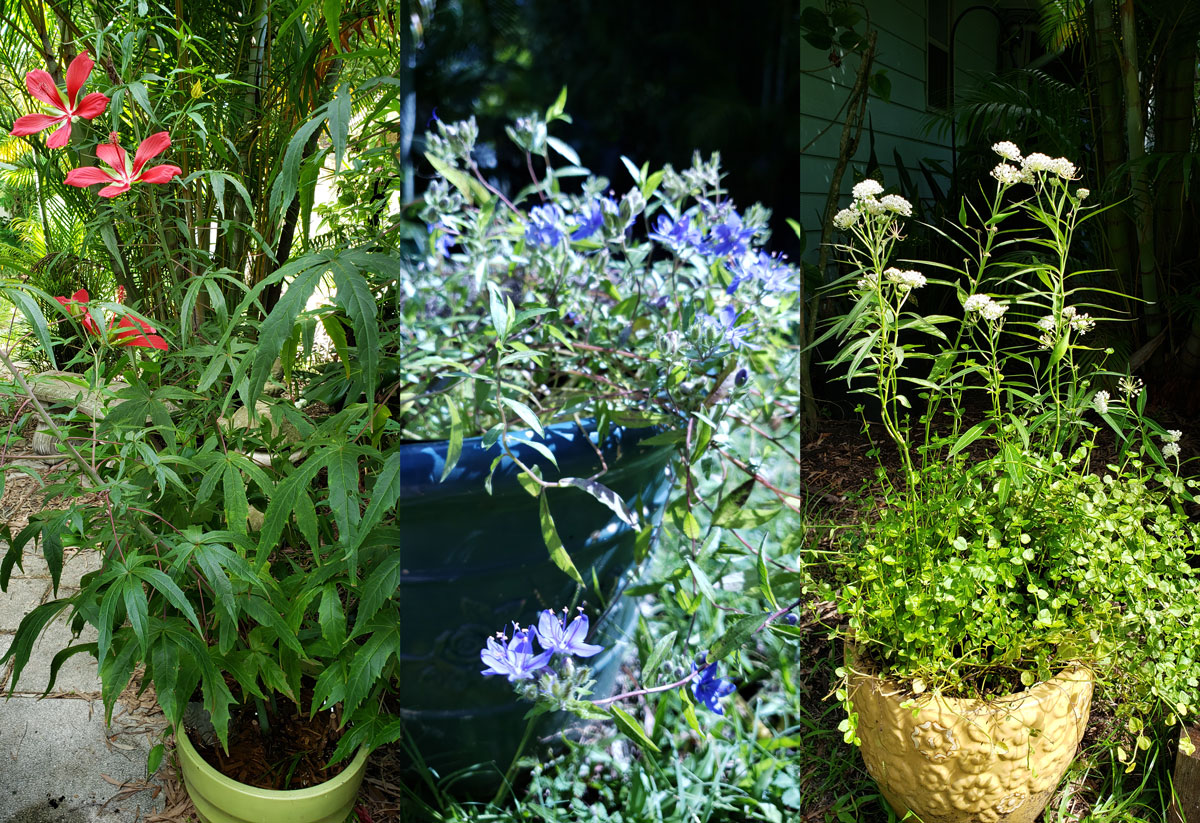
More buzz about pollinators
Making a home for native bees
It is more important than ever to make a home for native bees in Florida’s landscapes. Bee expert Dr. Rachel Mallinger of the University of Florida gives tips on the best ways to welcome them to urban landscapes.
Celebrate native bees and other pollinators
Do you enjoy juicy watermelons, local blueberries and strawberries and fresh Florida orange juice? How about carrots, broccoli, almonds and apples? If you do, please thank an insect.
Review of Xerces Society’s Milkweed Guide
The monarch’s population decline has caused great concern in the last few years. The Xerces Society’s insight into factors that influence monarch butterfly populations has pointed to many things.
WEBINAR — Creating Pollinator Pathways
Learn about creating pollinator pathways in the built environment in this webinar featuring Dr. Jaret Daniels, who explains how every landscape, large and small, is now critical to supporting the biodiversity that keeps our ecosystems functioning.

